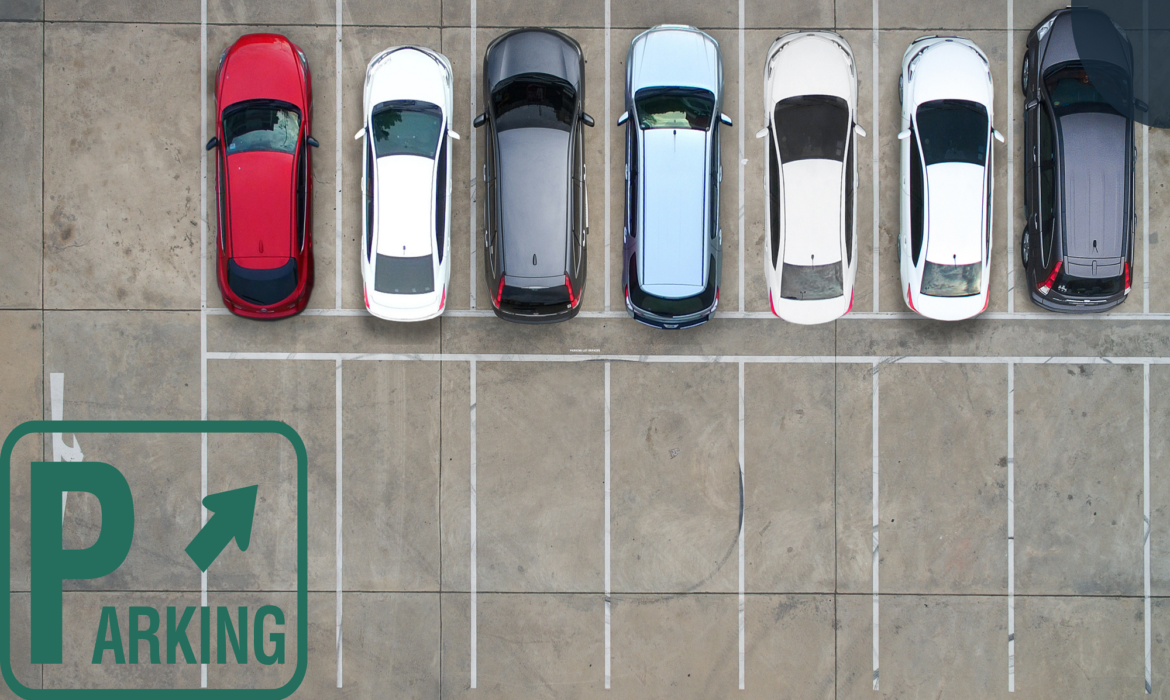Here you will find our blog entry on fixing up parking lots. If you own a business or run a busy shopping center, keeping the parking lot in good condition is essential to keeping your customers safe and happy. Cracks, potholes, and faded lines can develop over time due to normal wear and tear, which not only detract from the visual appeal but also increase the risk of injury.
We’ll take a look at repairing, resurfacing, and replacing as potential solutions to parking lot problems. We’ll talk about the signs that it’s time to replace your parking lot and the factors to consider when making that decision. Get ready to learn everything there is to know about parking lot maintenance and which solution is ideal for you.
Patching
Patching is the typical method used to fix minor cracks and holes in a parking lot. Patching is fixing the surface and protecting it from further deterioration by filling cracks and potholes using a particular asphalt mixture.
Patching saves money, which is one of its key benefits. Instead of repaving or replacing the entire parking lot, only the trouble spots need attention. In the end, this can help you save both time and money.
Patching also helps in the short term because it solves problems quickly. Repairing minor damage, such cracks or potholes, will have little effect on your daily operations.
It’s worth noting, though, that patching may not be an option if your parking lot has suffered considerable damage or has deteriorated to a certain point. In such circumstances, it may be required to resurface or replace the affected area.
For assistance on whether or not patching is necessary for your parking lot repairs, get a professional contractor to examine the pavement and give you their professional opinion.
Always bear in mind that the safety and attractiveness of your parking lot for all visitors depends on regular maintenance, including routine inspections and timely repair. Don’t ignore the damage; instead, fix it up as soon as possible.

Resurfacing
When thinking about ways to fix and prolong the life of your parking lot, resurfacing should be among your considerations. A new layer of asphalt is laid down on top of the old one, giving the road a clean, uniform look.
Resurfacing your parking lot is an excellent alternative to replacement because it can extend its useful life. Resurfacing aids in maintaining a road’s quality by fixing small flaws like cracks and potholes.
In addition to making your parking lot safer and more practical, resurfacing can also increase its value. The new coating makes for a safer driving surface, benefiting both motorists and pedestrians. The improved overall appearance of your building will help increase its curb appeal.
Resurfacing is generally an efficient treatment for ordinary wear and tear, while it may not be appropriate in cases where serious structural difficulties occur or if the base layers are significantly damaged.
Budget, damage, predicted lifetime improvements and long-term maintenance goals are all considerations when deciding whether to fix, resurface, or replace your parking lot. Making a well-informed choice that meets your unique requirements requires that you consult with experts.
Replacement
When it comes to fixing parking lots, replacement is usually the final option. The old pavement will be torn up and replaced with brand-new asphalt. When the damage to the parking lot is too significant for repairing or resurfacing, this is the solution of choice.
Replacement is preferable since it offers a permanent fix. If you tear everything up and start over, you can be confident that any problems will be fixed before you pour new concrete or asphalt. Furthermore, replacement lets you make any modifications to increase usability and accessibility.
Replacement, however, is often very pricey in comparison to alternative methods of fixing the problem. It will take more time, effort, and resources to complete. The parking lot will be unavailable during development, which could be an additional annoyance.
Large craters, widespread cracking, and severe deterioration are all signs that it may be time to repair your parking lot’s underlying pavement. A professional paver can evaluate your situation and advise you on whether or not to go this route, taking into account your preferences and financial limitations.
Parking lots can last longer with preventative care and regular maintenance, postponing the day when they need to be replaced entirely.
When to repair or replace your parking lot
At some point, you may have to determine whether or not to replace your parking lot. This choice has significant implications for the security and efficiency of your parking lot as a whole.
The level of damage sustained is an important consideration. Patching or resurfacing may usually fix minor damage like cracks and potholes. However, if the damage is severe and causes substantial structural concerns, it may be required to replace it.
The parking lot’s age should also be taken into account. Asphalt deteriorates and needs repairs more frequently as it ages. It may be cost-effective to replace your parking lot if it is nearing the end of its useful life or if problems persist despite ongoing upkeep.
Consider the volume of both users and vehicles. Repair alternatives may only provide short-term remedies if severe wear and tear have built up over time due to the regular passage of heavy cars through your parking lot. In such a circumstance, it is best to replace the complete surface to ensure its long-term viability.
When weighing the costs of each option, it is important to consider your budget constraints. Even while repairs are less expensive than replacements initially, if they keep happening because of the same problems, the total cost could end up being higher.
Whether you choose to repair or replace your parking lot depends on a number of contextual considerations. Talking to experts who can give you an accurate assessment of your pavement’s condition and provide you with precise recommendations is crucial.

Cost comparison of repair options
You can choose from a few different parking lot maintenance strategies. The price tag of each alternative should be a major consideration. Let’s take a look at how repairing, resurfacing, and replacing stack up financially.
Repairing parking lot cracks and potholes using patches is typically the least expensive solution. A specific asphalt mixture is used to fill in the cracks. When compared to other possibilities, this one is fast and cheap.
However, with resurfacing, a fresh layer of asphalt is laid down over the top of the old one. While this may be more expensive than patching, it will give your parking lot a clean, professional look. In addition, resurfaced parking lots last significantly longer than patched ones.
If your parking lot has significant damage or structural difficulties, replacement may be necessary but is also the most expensive choice. This necessitates ripping up the old asphalt and laying down brand new pavement in its place.
Budgetary considerations and the parking lot’s current state should also be taken into account while deciding on a restoration strategy. Talking to a professional paver can help you weigh the long-term benefits and costs of your options.
Remember that parking lot upkeep and repairs can extend the life of your lot and reduce the risk of accidents involving vehicles and pedestrians.
Conclusion
Depending on the level of damage and available funds, parking lot repairs can be approached in a number of different ways. There are perks and cons to all three options—repairing, resurfacing, and replacing.
Minor cracks or potholes can be repaired quickly and cheaply with a patch. It’s helpful in the short term, but it might need constant upkeep in the long run. When new asphalt is applied over an old one, the result is a more long-lasting surface. Your parking lot’s aesthetics and longevity can both benefit from this.
However, if the damage is too great or there are problems with the structure’s foundation, it may be time to replace it. The most expensive option, redoing the entire parking lot gives you a clean slate and increases the longevity and durability of your parking lot.
Considerations including age, condition, usage patterns, safety concerns, and financial limits might help you decide whether it’s time to repair or rebuild your parking lot. Professional inspections on a regular basis can assist spot issues early on so that solutions can be implemented.
The ability to compare prices is very important in making choices. While patching may be the cheapest option initially, it’s important to factor in the total cost of ownership over time. Resurfacing is a good compromise between price and longevity, but it may not fix any underlying problems.
You can make a well-informed decision on whether or not to repair or replace your parking lot by considering all these variables (without using the word “in conclusion”). If you want expert advice on which asphalt paving solution is appropriate for your situation, consulting with seasoned professionals in the field is a must.
Keep in mind that the life expectancy of any paved surface can be greatly increased via good care and routine maintenance. You can keep your property looking great and keep drivers safe for years to come if you make the effort to maintain it with smart maintenance and replacements.

